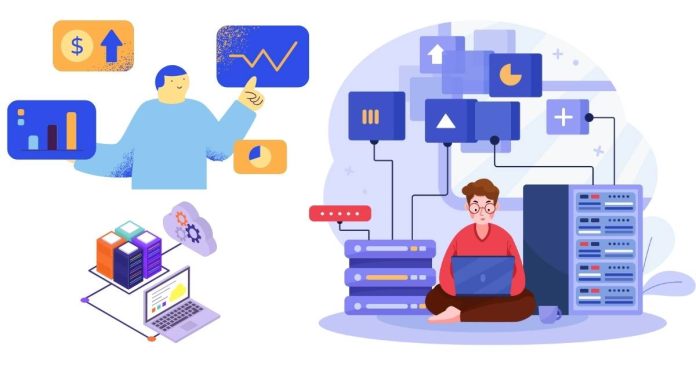OLAP (Online Analytical Processing) is a technology used in data management and business intelligence (BI) systems to support complex analysis of large volumes of data. It allows users to analyze data from multiple perspectives quickly and efficiently. OLAP is primarily designed for decision-making and is widely used in reporting, forecasting, and data analysis applications.
Key Features of OLAP
- Multi-Dimensional Analysis
OLAP organizes data into a multi-dimensional structure, often referred to as cubes. These cubes allow users to analyze data across various dimensions such as time, geography, product categories, or customers. - Fast Query Performance
OLAP systems are optimized for read-heavy operations and enable fast execution of complex queries, making them ideal for analytical workloads. - Aggregations and Summaries
OLAP pre-computes and stores aggregated data, such as sums, averages, or counts, allowing users to drill down into detailed data or roll up into summaries. - Interactive Analysis
Users can interactively explore data by slicing, dicing, pivoting, or drilling down/up into different dimensions, gaining insights quickly.
OLAP Architecture
OLAP operates on a multi-dimensional database (MDB) that stores data in a way that supports efficient querying. The architecture typically involves the following components:
- Data Sources
Raw data is extracted from various sources like transactional databases, CRM systems, or ERP software. - Data Warehouse
Data is stored in a centralized data warehouse, which serves as the foundation for OLAP processing. - OLAP Engine
The OLAP engine processes the data and performs operations like aggregations, transformations, and indexing to create the OLAP cubes. - Client Tools
Users access OLAP data through client applications, which include dashboards, BI tools, or spreadsheet software.
Types of OLAP
- MOLAP (Multidimensional OLAP)
- Stores data in a pre-computed, multidimensional array (cube).
- Optimized for fast query performance.
- Example: IBM Cognos, Oracle Essbase.
- ROLAP (Relational OLAP)
- Works directly with relational databases, without pre-computed cubes.
- Handles larger datasets but may have slower performance for complex queries.
- Example: SAP Business Objects, MicroStrategy.
- HOLAP (Hybrid OLAP)
- Combines the benefits of both MOLAP and ROLAP.
- Stores frequently used aggregations in cubes (MOLAP) while accessing detailed data from relational databases (ROLAP).
- Example: Microsoft SQL Server Analysis Services (SSAS).
OLAP Operations
- Roll-Up
Aggregates data to a higher level of hierarchy.
Example: Summing monthly sales into yearly sales. - Drill-Down
Moves from summarized data to detailed data.
Example: Viewing weekly sales data from monthly sales. - Slice
Filters the cube along a specific dimension.
Example: Viewing sales data for a particular region. - Dice
Filters the cube across multiple dimensions.
Example: Viewing sales data for a specific region and time period. - Pivot
Rotates the data to provide different perspectives.
Example: Switching rows and columns in a sales report.
Advantages of OLAP
- Improved Decision-Making: Enables deep analysis of data, supporting better business decisions.
- User-Friendly: Intuitive tools and interfaces make it accessible to non-technical users.
- Scalable Analysis: Handles large datasets and supports complex queries.
- Faster Insights: Pre-computed aggregations speed up the query response time.
Disadvantages of OLAP
- High Cost: OLAP systems can be expensive to implement and maintain.
- Complex Setup: Building and managing OLAP cubes require expertise.
- Limited Real-Time Processing: OLAP is designed for analytical, not transactional, workloads.
Applications of OLAP
- Business Intelligence: Creating dashboards and reports for key performance indicators (KPIs).
- Sales Analysis: Analyzing sales trends, revenue, and customer behavior.
- Financial Planning: Budgeting, forecasting, and cost analysis.
- Healthcare: Patient data analysis and resource planning.
- Retail: Inventory and supply chain management.
OLAP (Online Analytical Processing) is a vital tool for businesses seeking to extract meaningful insights from large datasets. With its multi-dimensional analysis, fast query performance, and user-friendly tools, OLAP has become a cornerstone of modern business intelligence systems. While it requires investment and expertise, its ability to empower data-driven decision-making makes it an indispensable technology in many industries.


